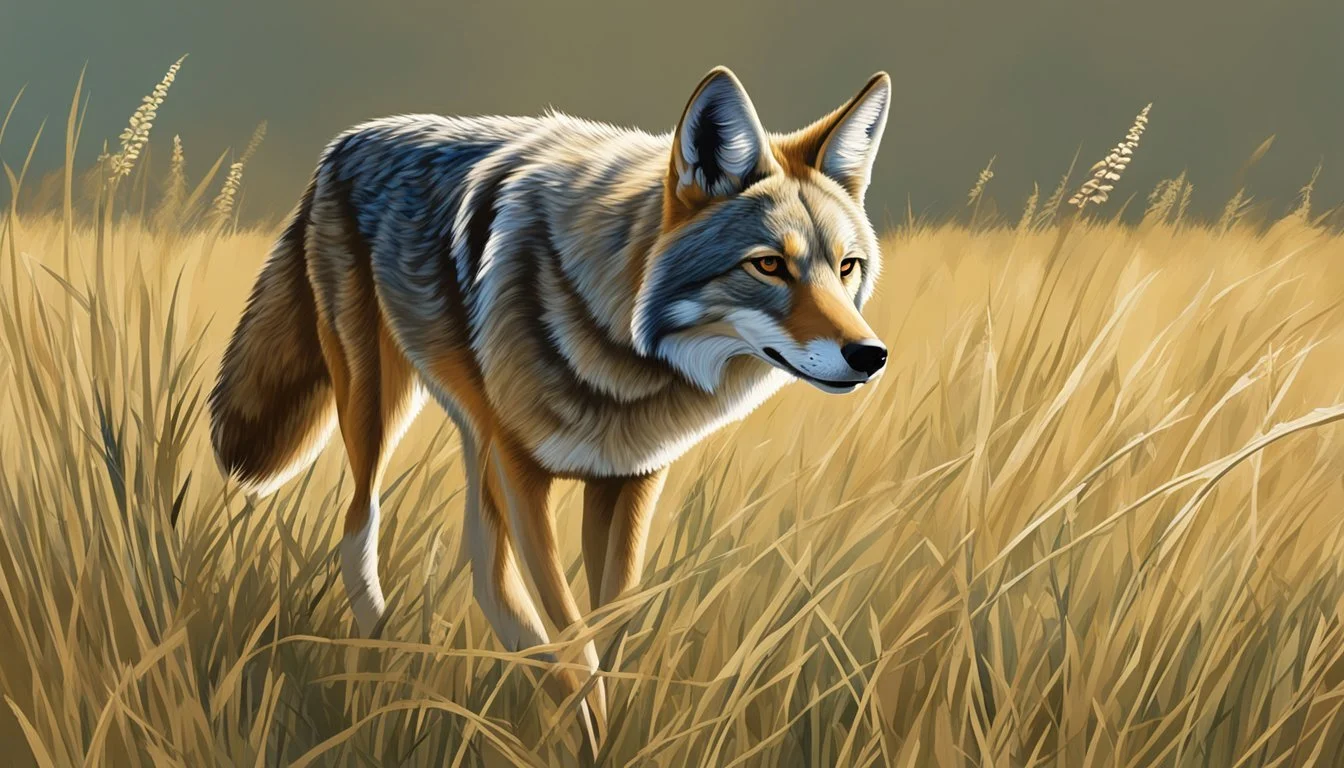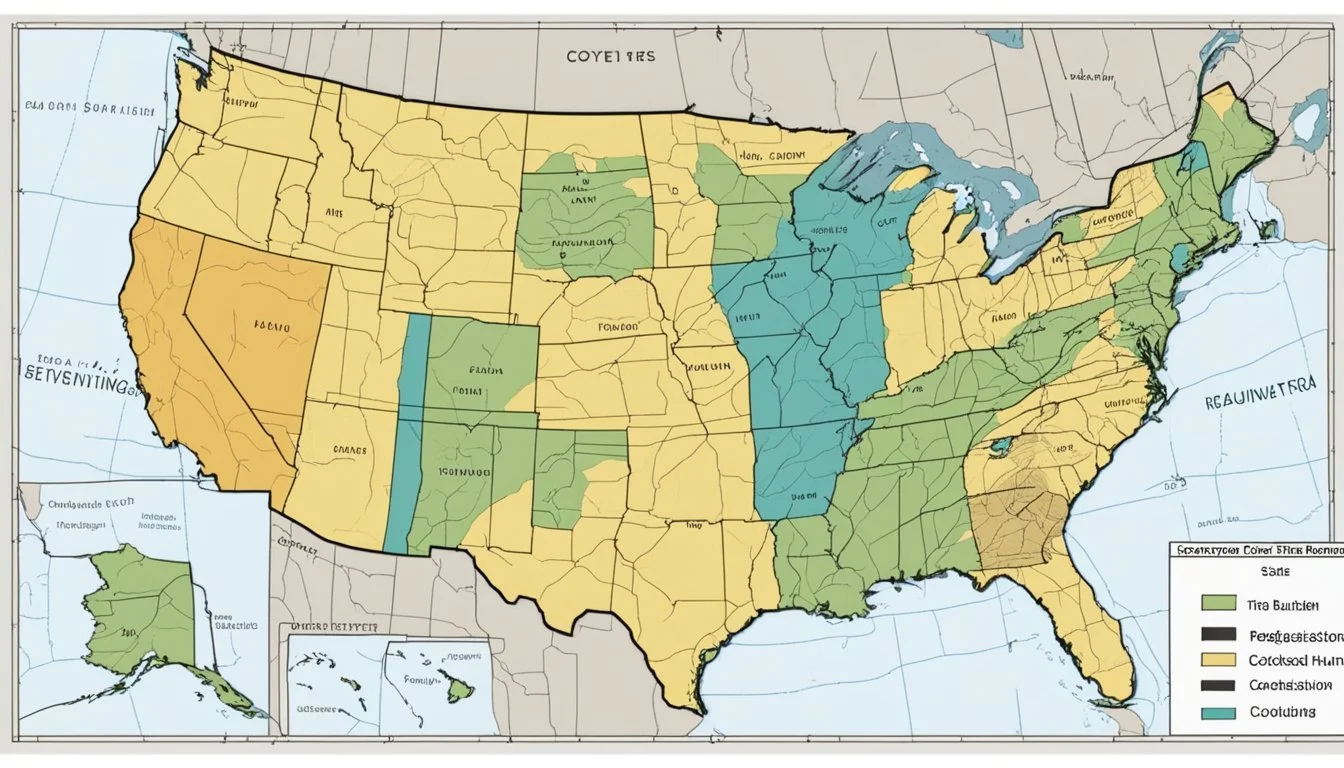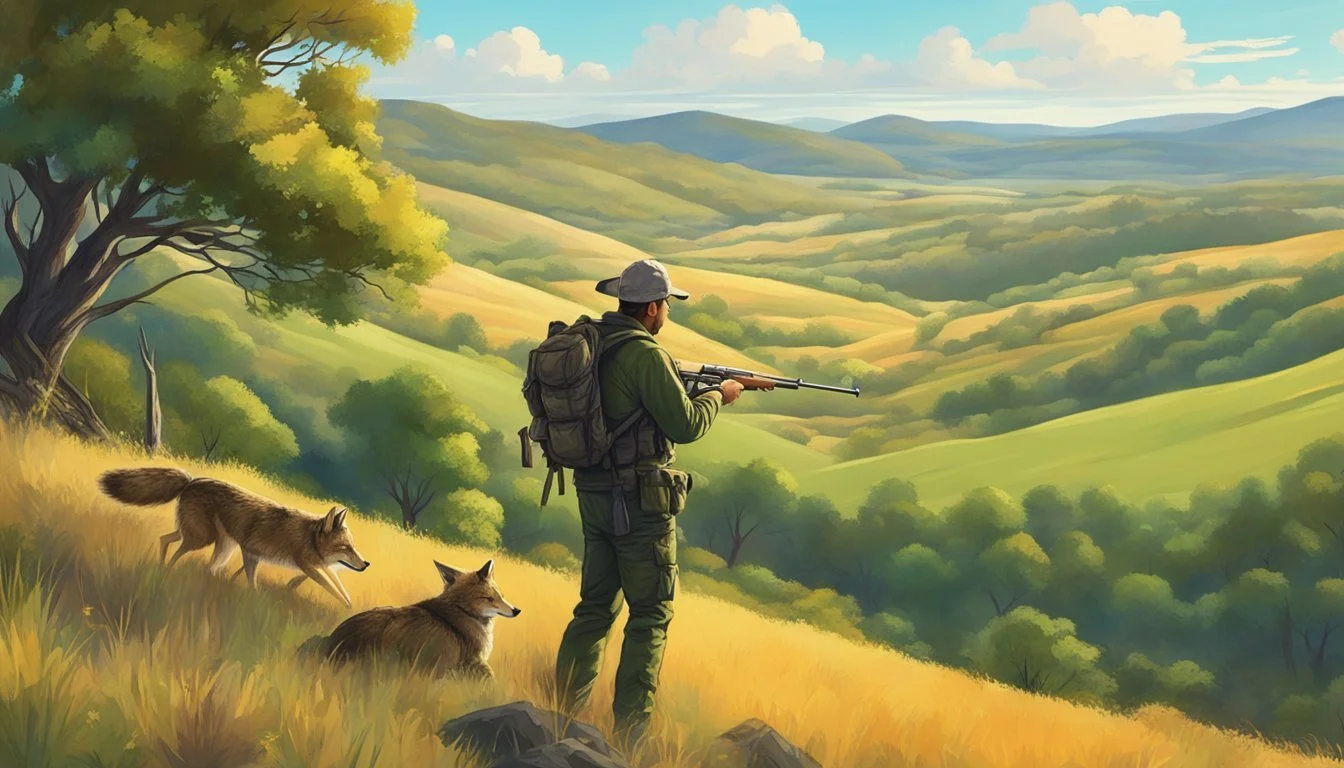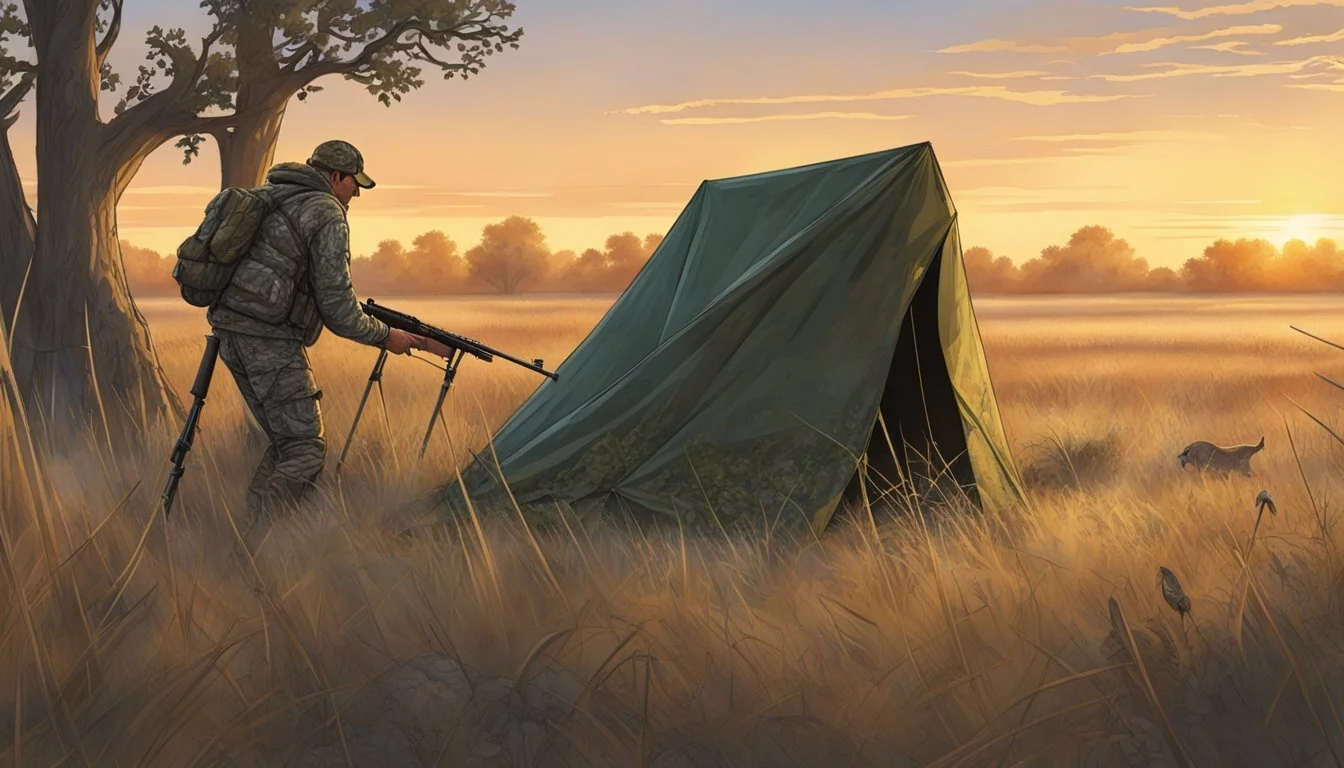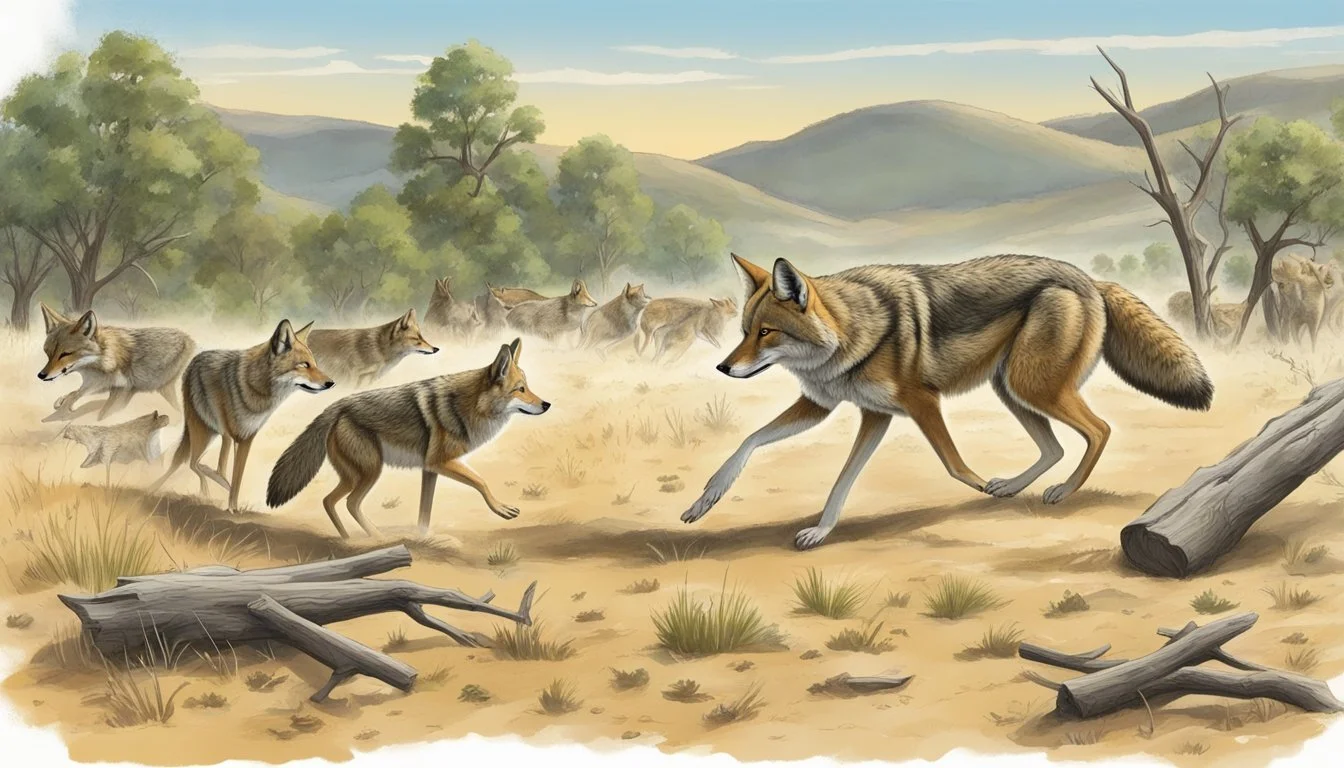Best States for Coyote Hunting
Top Destinations for Hunters
Coyote hunting has established itself as a significant outdoor activity across North America, particularly in the United States. Enthusiasts and seasoned hunters alike find the pursuit of this adaptable and wily species both a challenging and rewarding experience. As coyotes are prevalent throughout the continental U.S., they offer a viable game option in many states. Their populations have expanded over the years, and in some areas, they are hunted not just for sport but also for wildlife management purposes.
Some states stand out as prime destinations for coyote hunting due to abundant populations, favorable habitats, and less restrictive regulations. Western states, with their expansive tracts of open land, are often cited as superior locales for pursuing these animals. States such as Nevada and Arizona are renowned for their robust coyote numbers and varied terrains, from desert valleys to mountainous regions. Coyotes in these areas often boast larger body sizes and more prime coats, attributes highly valued by hunters.
Understanding Coyote Behavior and Habitat
To effectively hunt coyotes, one must be familiar with their behavioral patterns and the specific environments they inhabit. This understanding is crucial for locating and tracking these adaptable predators.
Physical Characteristics of Western and Eastern Coyotes
Western Coyotes: Typically smaller than their eastern counterparts, western coyotes have a lighter build and their coat colors often match the desert and mountainous landscapes they occupy. This adaptation provides camouflage across the varied Western ecosystems from the rock-strewn mountains to arid deserts. They have excellent vision, which is an advantage in the vast open spaces.
Eastern Coyotes: Larger with a more wolf-like appearance, eastern coyotes have adapted to the forests and fields of the Eastern states. Their thicker fur, often in darker shades, helps them blend into the denser, more vegetative landscapes. Both variants play pivotal roles in their respective ecosystems, regulating the populations of smaller wildlife.
Coyote Habitats Across Different States
Coyotes have shown remarkable adaptability in their habitats, occupying virtually all types of landscapes across different states. In the West, they are often found in:
Mountains and forests: preferring rugged terrain for denning.
Deserts: using keen senses to hunt in sparse vegetation.
In the East, coyote habitats include:
Forests: which provide coverage and ample prey.
Fields: offering open spaces for hunting, similar to their western relatives.
Their presence across varying states signifies a broad adaptability, making them a common element in North America's wildlife mosaic.
Overview of Coyote Hunting Regulations
State-specific wildlife agencies establish regulations to ensure the sustainable and legal hunting of coyotes across the United States. Here are the specific laws related to licensing, seasons, and methods of take.
Licensing and Permits
Each state mandates specific licensing and permit requirements for coyote hunting. For instance, while many states require no special license for coyote hunting, others stipulate acquiring a small game license. The public lands and national forests may have additional permit requirements, which hunters need to comply with before initiating a hunt.
Seasonal Restrictions and Legal Hunting Hours
Hunting seasons and legal hunting hours are variable and critical for regulatory compliance. Some states permit year-round coyote hunting, yet there may be restrictions based on breeding seasons or vulnerable wildlife periods. Night hunting is often regulated differently, with some states allowing it under certain conditions, while others may have stringent prohibitions.
Bag Limits and Legal Methods of Take
Most states categorize coyotes as nongame animals, which usually means there are no daily or seasonal bag limits. However, specific statewide regulations govern the methods of take, such as the prohibition of poison and hunting from a motorized vehicle. Legal methods often include the use of firearms, archery, and manual calls. Always check with the relevant wildlife agency for the most accurate and updated regulations.
Top States for Coyote Hunting
In the United States, certain regions are renowned for their coyote hunting due to ample populations and favorable conditions. Enthusiasts will find varying terrains and regulations, presenting diverse hunting experiences.
The Midwest's Ideal Coyote Hunting Scenes
Kansas and Nebraska epitomize the Midwest's appeal for coyote hunters. Kansas, boasting vast stretches of grassland, provides hunters with open areas where coyotes thrive. Nebraska's mixed landscapes of farms and prairies attract coyotes, presenting ample opportunities for hunters. Both states have relatively lax regulations, which, combined with substantial public lands, create welcoming environments for this particular outdoor activity.
Western States With Prime Coyote Populations
The Western United States is home to some of the most prime coyote hunting grounds. Colorado features expansive national forests where cold weather and high altitudes lead to a large population of coyotes. Hunters are likely to encounter coyotes that have never been previously hunted, leading to higher success rates. Wyoming and Nevada, known for their rugged landscapes and large tracts of Bureau of Land Management (BLM) lands, offer hunters wide spaces where coyotes are prevalent, along with the freedom of vast public lands to track their quarry.
Unique Coyote Hunting Opportunities in Alaska
Alaska presents hunters with a unique challenge due to its remote and harsh environments. While not traditionally seen as a coyote hunting destination, Alaska's wilderness areas offer a different kind of hunting adventure where hunters can immerse themselves in pristine nature. Coyotes in Alaska are well-adapted to the arctic conditions, and their fur is exceptionally thick, making them sought after. However, hunters should prepare for the state's rugged terrain and climate, and ensure they are aware of specific local regulations.
Essential Coyote Hunting Strategies
In the pursuit of coyotes, hunters must employ a combination of scouting, calling strategies, and careful positioning to be successful. With the right techniques, they can increase their chances of encountering this cunning predator.
Successful Scouting Techniques
Scouting is the first step to a successful coyote hunt. Hunters should look for signs of coyote activity, such as tracks, droppings, and remnants of prey. An effective scouting method includes:
Checking open pastures and fields for coyote presence.
Making note of where coyotes may find cover during the day.
Observing from a distance to avoid disturbing the natural behavior of the coyotes.
Coyote Calling and Use of Decoys
Effective calling is essential to lure coyotes into range. Hunters must choose the correct calls and use them judiciously:
Prey distress reed calls can simulate the sounds of a struggling animal and trigger a coyote's hunting instinct.
Periodic howling mimics coyote communication, enticing a response or approach.
Pairing calls with decoys can create a more enticing scene, as coyotes expect movement with sound.
Using a variety of calls in a sequence can help maintain the coyote's interest and lead to a successful hunt.
Strategic Positioning and Stalking
The hunter's position is crucial when hunting coyotes. They should use natural cover and camouflage to remain undetected. Strategies include:
Selecting a vantage point with clear visibility of the calling area.
Stalking with care, minimizing noise, and using the terrain to approach areas where coyotes have been scouted.
Remaining still and patient after making a call, as coyotes may take their time to investigate.
Positioning and careful movement can ensure that hunters remain invisible to coyotes, who rely heavily on their keen senses to detect threats.
Equipment and Technology for Coyote Hunting
The right choice of equipment and advancements in technology can significantly enhance the effectiveness of coyote hunting. They offer hunters improved accuracy, visibility, and the ability to mimic prey sounds to lure coyotes.
Recommended Firearms and Ammunition
Firearms: Coyote hunters commonly use centerfire rifles due to their accuracy and range. Popular calibers include the .223 Remington, .22-250 Remington, and the .243 Winchester.
Ammunition: Varmint-specific bullets are designed to offer high velocity and flat trajectories, making them ideal for coyote hunting. Examples includes:
.223 Rem: 55-grain hollow-point for a balance of speed and stopping power.
.22-250 Rem: 50-grain tipped bullets for long-range shots.
Advancements in Night Vision and Optics
Night Vision: Technology has greatly boosted the hunter's capability to see in low-light conditions. Hunters can choose between different types of night vision scopes:
Gen 1, 2, or 3 devices, with Gen 3 providing the clearest images.
Digital night vision, which is more affordable and versatile in different light conditions.
Optics: High-quality optics are essential. Look for scopes with:
Variable magnification for different hunting scenarios.
Clear glass and good light transmission for dusk and dawn times when coyotes are most active.
The Role of Technology with Electronic Calls
Electronic Calls: These devices can mimic a variety of sounds, from distressed prey to coyote communication signals, increasing the likelihood of attracting a coyote. Some key features include:
A wide range of pre-recorded sounds.
Remote Controls: To operate calls from a distance, reducing the chance of being spotted by a coyote.
Gear Integration:
Some electronic calls can be synced with mobile applications for enhanced control.
Used in conjunction with proper camouflage gear, electronic calls can significantly improve a hunter's stealth and success rate.
Best Practices for Coyote Hunting Safety and Ethics
In coyote hunting, prioritizing safety and ethics not only protects the hunter and population but also maintains the delicate balance of the ecosystem.
Safe Handling of Firearms and Equipment
When hunting coyotes, the safe handling of firearms and equipment is crucial. Hunters must treat all firearms as if they are loaded, keeping the muzzle pointed in a safe direction and finger off the trigger until ready to shoot. They should ensure that their firearm is appropriate for the hunt and that they’re proficient in its use. Proper storage and transportation of firearms is also vital for the safety of everyone involved.
Ethical Considerations in Predator Hunting
Responsible predator hunters are committed to making a clean, humane kill, aiming for a shot that ensures a quick and ethical end to the prey. It’s also important to follow all state regulations regarding hunting methods, seasons, and licensing requirements. Hunters should know their target and what lies beyond it to avoid unintended harm to non-target wildlife or property.
Respecting Wildlife and Ecosystem Balance
An informed coyote hunter understands the importance of wildlife within the ecosystem and aims to minimize their impact on the environment. This involves being selective in hunting, taking only what they need, and ensuring that their activities do not contribute to destabilizing the existing coyote population. Hunters should recognize their role in conservation by complying with bag limits and by supporting habitat preservation efforts.
Impact of Coyote Hunting on Local Ecosystems
Coyote hunting has discernible effects on local ecosystems, influencing wildlife populations and biodiversity. The practices and regulations surrounding this hunting are a point of debate among conservationists, hunters, and ecologists.
Benefits to Deer and Small Game Populations
Coyotes are opportunistic predators that consume a variety of prey, including deer, small game, and livestock. In some regions, coyotes' predation on fawns can reduce mule deer and white-tailed deer populations. States that promote coyote hunting claim it can relieve predation pressure, potentially benefiting game species and supporting hunting industries.
Deer Populations: Coyote hunting can lead to a temporary increase in deer survival rates.
Small Game: Reduced coyote numbers may decrease predation on species such as rabbits and rodents.
The Controversy Surrounding Coyote Bounties
Bounty programs offer monetary rewards for hunting predators like coyotes. These programs argue for population control to protect livestock and game species. However, critics assert that such initiatives fail to account for the ecological role of coyotes and may inadvertently disrupt trophic dynamics.
Ranchers' Perspective: Coyote bounties can be seen as a way to protect cattle and sheep investments.
Ecosystem Impact: Ecologists caution that bounties can lead to imbalances, affecting not just coyotes, but other predator and prey species.
Balancing Predator-Prey Relationships and Biodiversity
Coyotes play a pivotal role in ecosystems by regulating prey populations and thus maintaining biodiversity. Their adaptive behavior can compensate for hunting pressure, sometimes resulting in an unexpected increase in their numbers. Effective wildlife management seeks a balance where predator-prey dynamics sustain a diverse and healthy ecosystem.
Predators: Coyotes help to keep prey species in check, preventing overgrazing and promoting vegetation health.
Biodiversity: Predation is a natural ecological process that contributes to the health and diversity of ecosystems.

